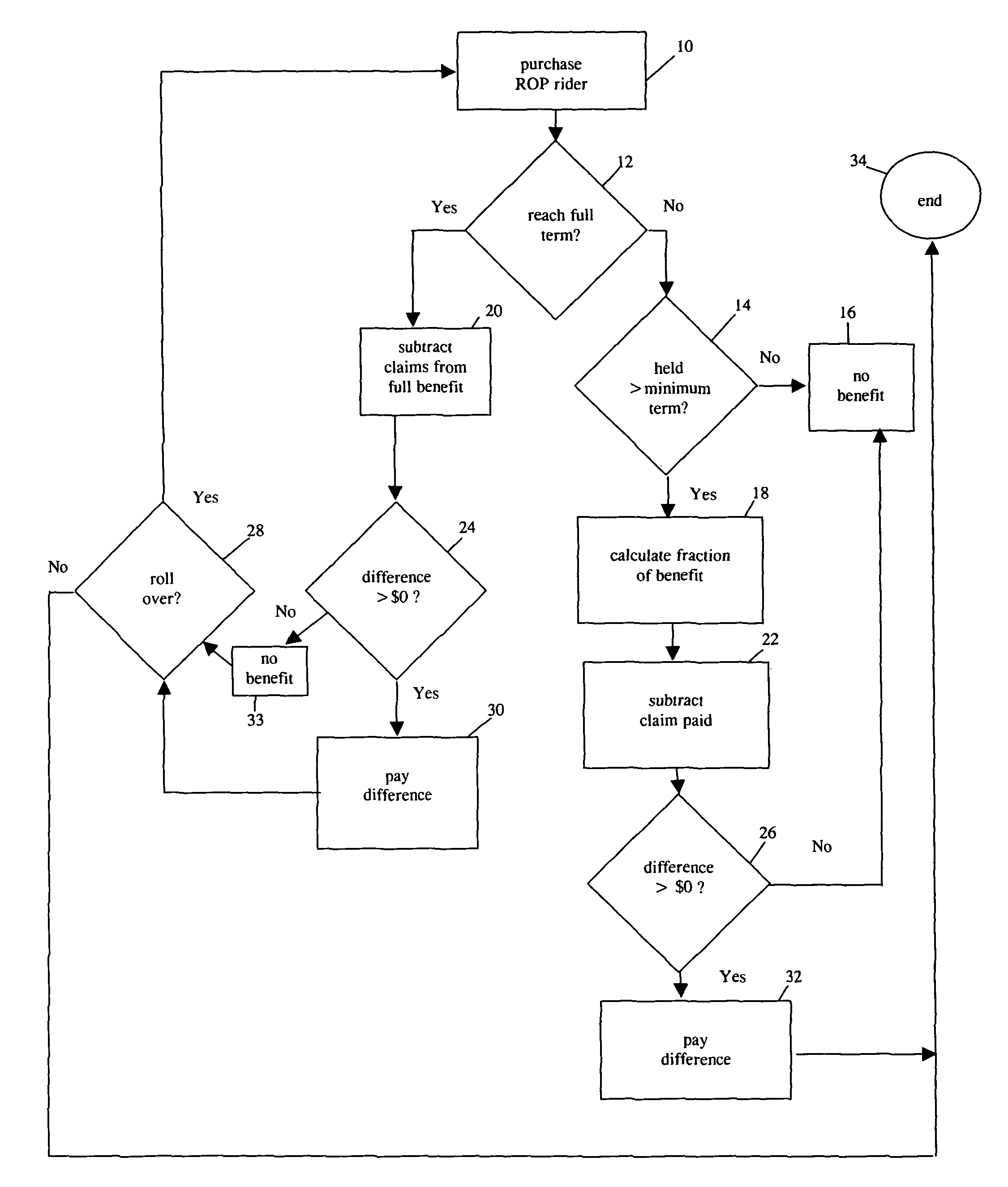Return-of-premium insurance system and method
a premium insurance and premium technology, applied in the field of insurance, can solve the problems of high disadvantage of life insurance purchasers, the possibility of premium or benefit change is seen as highly disadvantageous by the insured, and the whole life insurance is too costly and complex to be beneficial to the insured. , to achieve the effect of small premium differences
- Summary
- Abstract
- Description
- Claims
- Application Information
AI Technical Summary
Benefits of technology
Problems solved by technology
Method used
Image
Examples
Embodiment Construction
[0025]The return of premium (ROP) insurance method is applied according to the preferred embodiment with respect to property and casualty insurance, and related forms of insurance, including insurance that governments or lenders typically require persons to maintain under certain circumstances, and such insurance for which the term is potentially indefinite and the terms of the policy may change over time. In the preferred embodiment, the customer is offered the ROP benefit as a rider to a standard insurance policy. The customer would pay a premium that reflects the cost of the insurance itself plus the value of the ROP benefit. The customer would thus pay a single premium, even though the ROP benefit is offered by the insurer as an add-on option. In alternative embodiments, a policy could be presented that integrates the ROP benefit. In other alternative embodiments, the ROP benefit could be billed to the insured separately from the cost of the standard insurance policy, although i...
PUM
 Login to View More
Login to View More Abstract
Description
Claims
Application Information
 Login to View More
Login to View More - R&D
- Intellectual Property
- Life Sciences
- Materials
- Tech Scout
- Unparalleled Data Quality
- Higher Quality Content
- 60% Fewer Hallucinations
Browse by: Latest US Patents, China's latest patents, Technical Efficacy Thesaurus, Application Domain, Technology Topic, Popular Technical Reports.
© 2025 PatSnap. All rights reserved.Legal|Privacy policy|Modern Slavery Act Transparency Statement|Sitemap|About US| Contact US: help@patsnap.com



